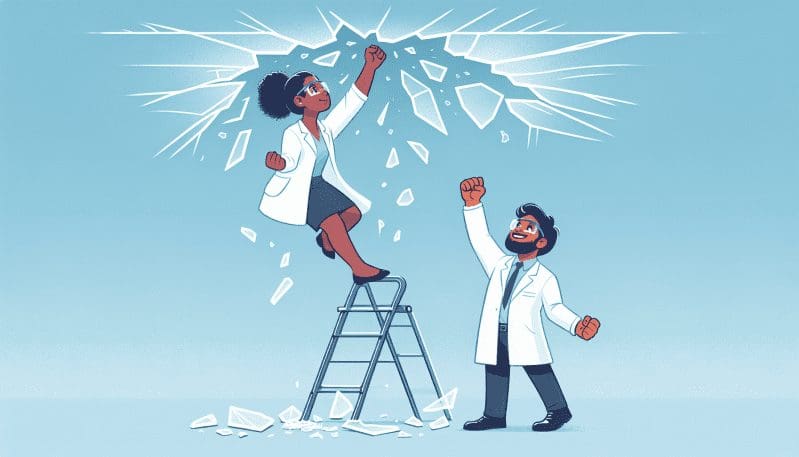Breaking the Glass Ceiling: The Transformational Power of Effective Mentorship and Sponsorship in the Biotech Industry
- Home
- Breaking the Glass Ceiling: The Transformational Power of Effective Mentorship and Sponsorship in the Biotech Industry
- Editors Desk
- April 11, 2024
- 0 Comments
As a pioneering female biotech researcher, I have navigated the complex labyrinth of an industry that often presents a denser weave of glass for women to peer through—let alone break. The biotech sector, like many STEM fields, has traditionally seen an underrepresentation of women in executive roles. The path to leadership is fraught with unique challenges, including implicit bias, unequal growth opportunities, and a scarcity of role models. Recognizing these hurdles, it’s essential to understand the transformative potential of mentorship and sponsorship in catalyzing the advance of female professionals in biotech.
Mentorship and sponsorship are two distinct but complementary forces. While mentoring is about guidance and skill development, sponsorship involves active advocacy and door-opening. Effective mentors provide their mentees with crucial insights, feedback, and encouragement necessary to foster professional growth. They act as sounding boards, and educational resources, and even offer emotional support. Sponsors, by contrast, use their influence to directly advance their protégé’s career, whether by recommending them for promotions, involving them in high-visibility projects, or endorsing their leadership capabilities to other key decision-makers.
Throughout my career, I have been fortunate enough to benefit from both mentors and sponsors who have seen potential in me and have been crucial in my development as a biotech leader. They have advised me on navigating the industry, helped me connect with influential networks, and championed my accomplishments. But beyond personal anecdotes, there’s a clear need for a systemic embrace of these relationships across the sector.
A McKinsey & Company report highlighted that women, particularly in male-dominated industries, are over-mentored but under-sponsored. Mentorship without sponsorship may help with personal development, but it often falls short in propelling women into leadership positions. The biotech industry must adopt a dual strategy that not only supports women in their growth but also actively pushes for their advancement.
The current state of mentorship and sponsorship in biotech can certainly improve. Organizations need to build formal programs that encourage both, ensuring that they are accessible to all levels of professionals and are not confined to informal networks, which can perpetuate existing biases. Additionally, men, who predominantly hold leadership positions, need to be actively involved as allies, mentoring and sponsoring women to create a more balanced representation in decision-making roles.
When compared to the broader narrative shared by publications like the Washington Post, The New Yorker, and The New York Times, the approach to mentorship and sponsorship in biotech is not dissimilar. Issues of gender imbalance and the efficacy of professional support systems are universal. However, the biotech sector faces its specific set of industry-related cultural and structural barriers that must be navigated. There are lessons to be learned from other sectors, such as the importance of transparency in sponsorship activities and the benefits of mentorship programs that prioritize diversity and inclusion.
To build successful mentorship and sponsorship relationships, there needs to be a foundation of trust, clear communication, and aligned expectations. Mentors and sponsors should be committed to the growth of their mentees, being proactive and invested in their success. Meanwhile, mentees must take an active role, seeking feedback, setting career goals, and leveraging the support they receive to take on new challenges.
In conclusion, the advancement of women in the biotech industry is a multifaceted challenge that requires a robust ecosystem of mentorship and sponsorship. By drawing on successful strategies from other sectors and focusing on proactive advocacy, we can shatter the glass ceilings that remain, fostering a biotech landscape that celebrates and uplifts the contributions of its female workforce. Together, we can forge a path to leadership that is more inclusive, equitable, and just for the working women at the heart of biotechnology.


Leave A Comment